Description of first nursery area for a pygmy devil ray species (Mobula munkiana) in the Gulf of California, Mexico
January 2021
Marta D. Palacios, Edgar M. Hoyos-Padilla, Abel Trejo-Ramírez, Donald A. Croll, Felipe Galván-Magaña, Kelly M. Zilliacus, John B. O’Sullivan, James T. Ketchum & Rogelio González-Armas
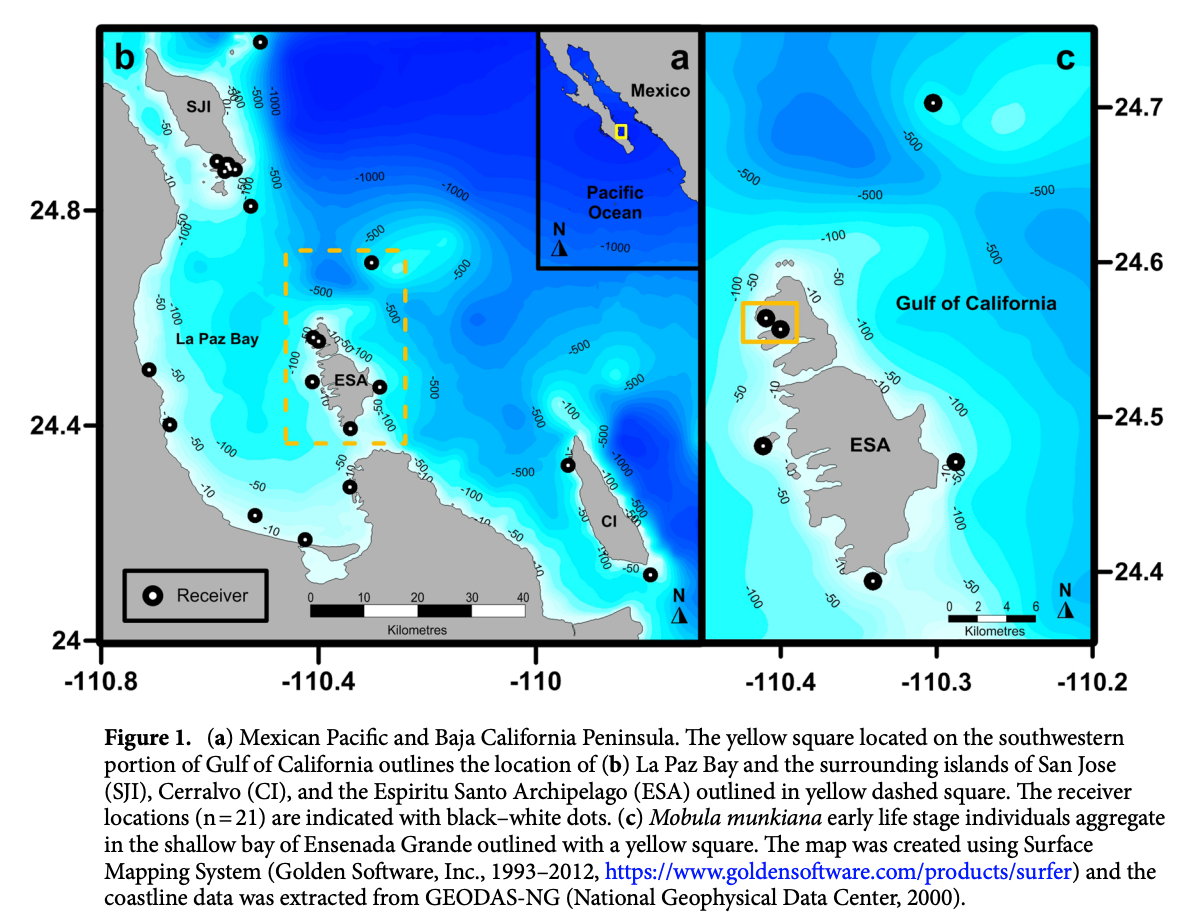
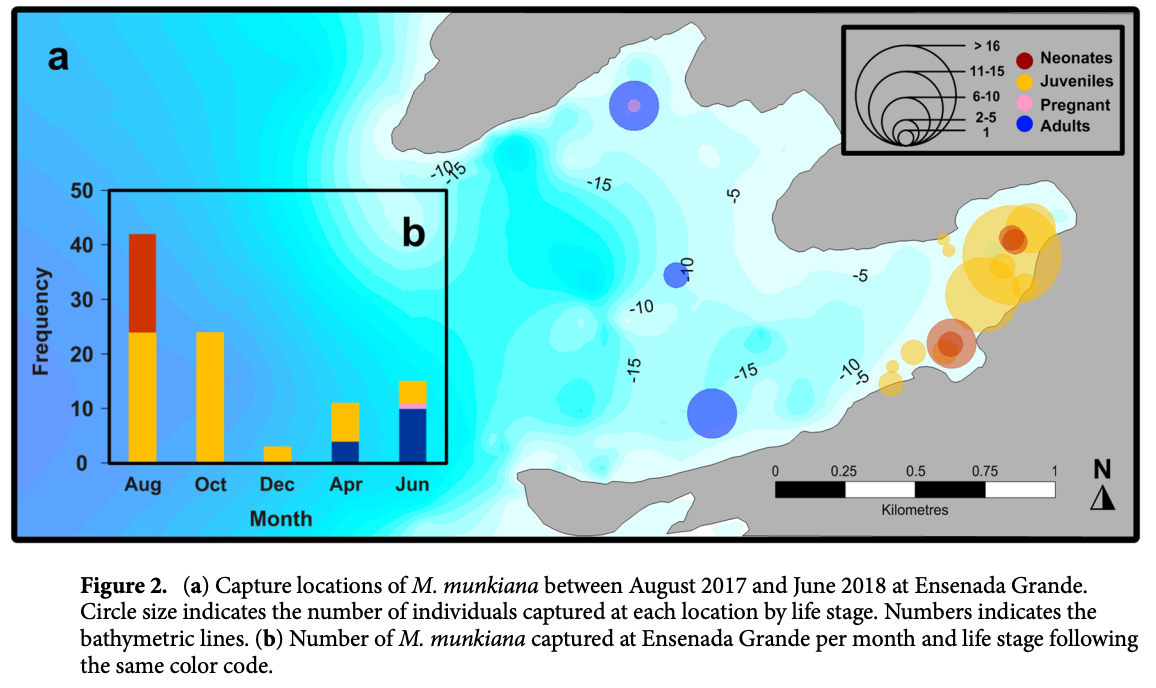
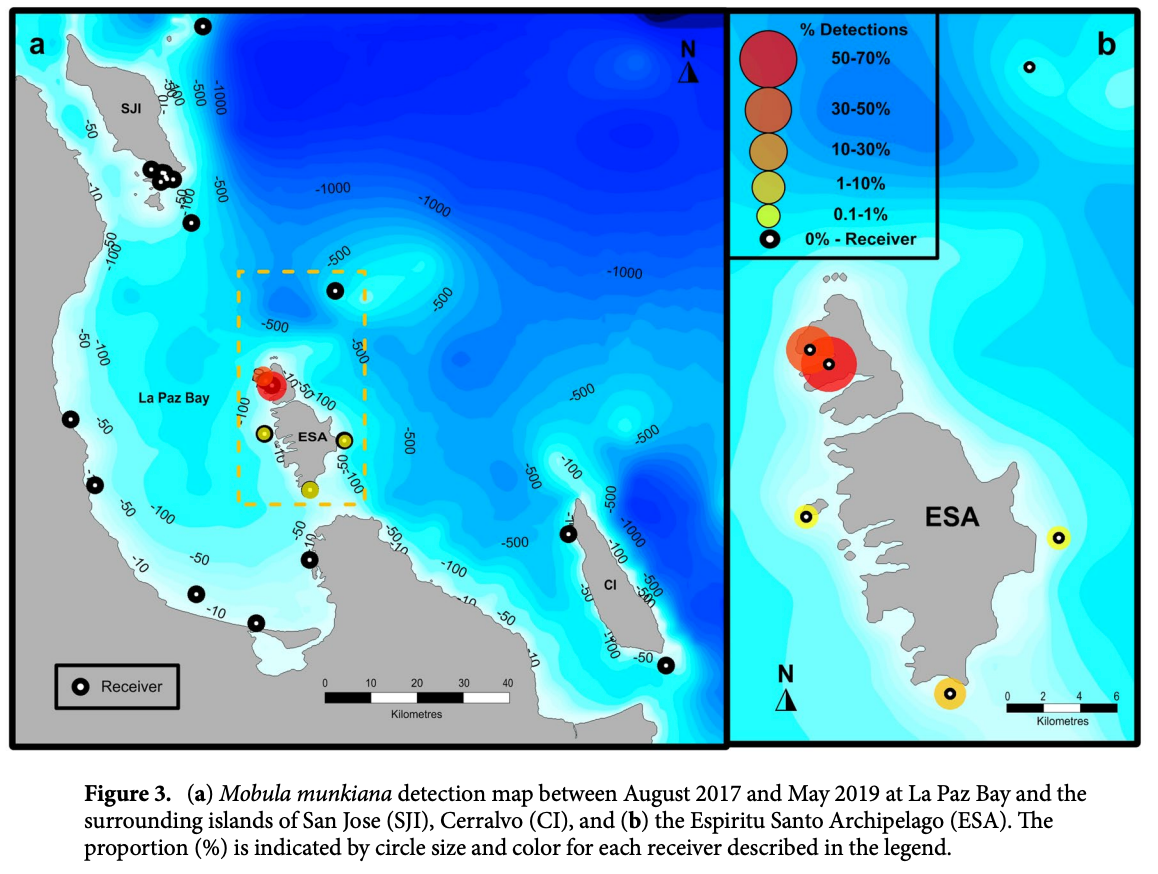
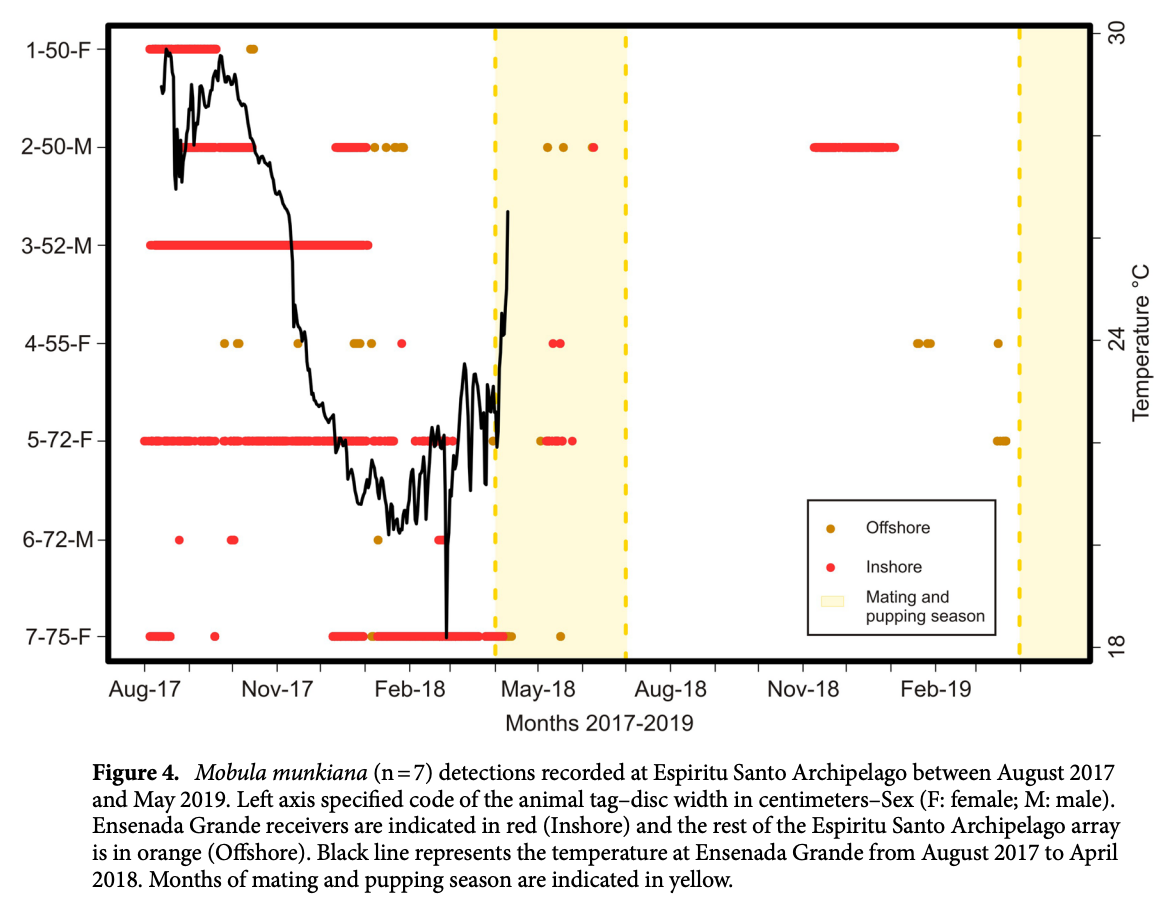
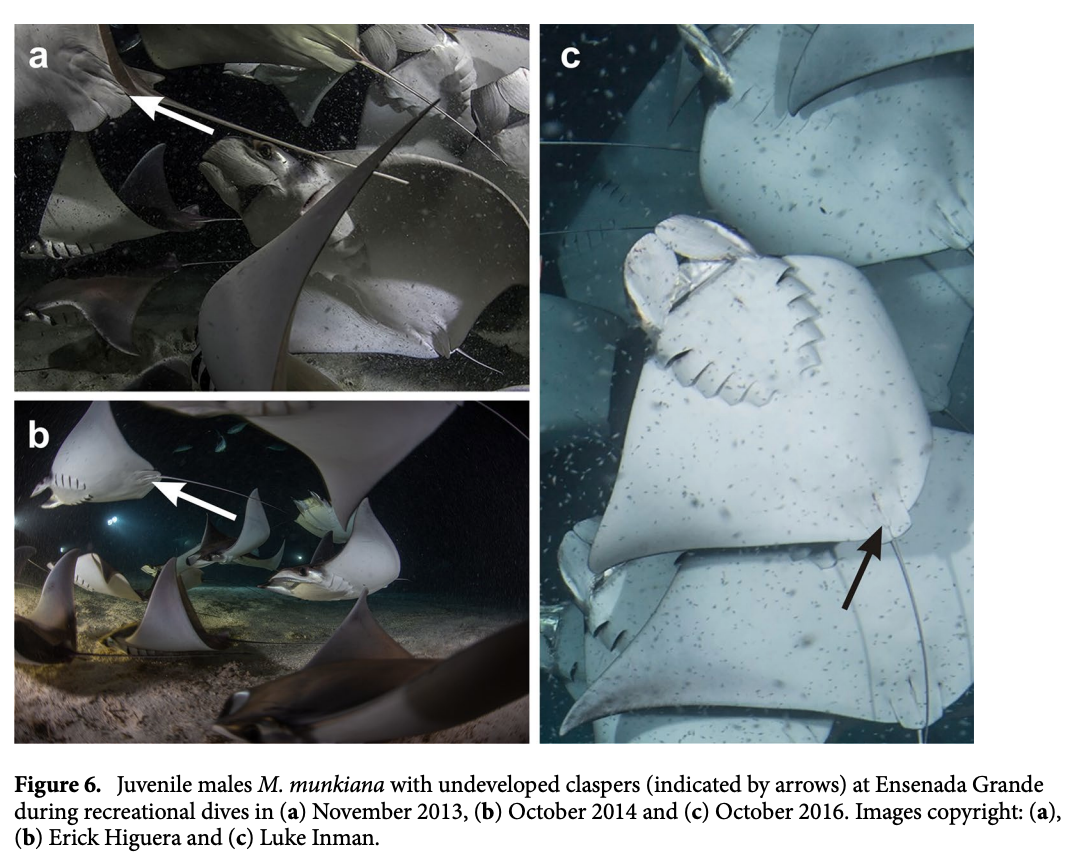
Summary: Munk's pygmy devil rays are vulnerable to targeted and by-catch fisheries, due to their low fecundity and delayed reproduction. Researchers have identified a nursery area for these rays in Espiritu Santo Archipelago, Mexico. Neonates and juveniles make up the majority of individuals in this area, and are found to spend up to 145 consecutive days there. Observations of pregnant females and mating behaviour indicate a pupping period from April to June. The study highlights the importance of shallow bays for the conservation of this species during their early life stages.
Abstract
“Munk’s pygmy devil rays (Mobula munkiana) are medium-size, zooplanktivorous filter feeding, elasmobranchs characterized by aggregative behavior, low fecundity and delayed reproduction. These traits make them susceptible to targeted and by-catch fisheries and are listed as Vulnerable on the IUCN Red List. Multiple studies have examined fisheries impacts, but nursery areas or foraging neonate and juvenile concentrations have not been examined. This study describes the first nursery area for M. munkiana at Espiritu Santo Archipelago, Mexico. We examined spatial use of a shallow bay during 22 consecutive months in relation to environmental patterns using traditional tagging (n = 95) and acoustic telemetry (n = 7). Neonates and juveniles comprised 84% of tagged individuals and their residency index was significantly greater inside than outside the bay; spending a maximum of 145 consecutive days within the bay. Observations of near-term pregnant females, mating behavior, and neonates indicate an April to June pupping period. Anecdotal photograph review indicated that the nursery area is used by neonates and juveniles across years. These findings confirm, for the first time, the existence of nursery areas for Munk’s pygmy devil rays and the potential importance of shallow bays during early life stages for the conservation of this species.”
Author Affiliation
Centro Interdisciplinario de Ciencias Marinas, Instituto Politécnico Nacional
Pelagios Kakunjá A.C.
Ecology and Evolutionary Biology Department, University of California Santa Cruz
Fins Attached Marine Research and Conservation
Monterey Bay Aquarium
Centro de Investigaciones Biológicas del Noroeste (CIBNOR)
Funded by
Monterey Bay Aquarium
University of California Santa Cruz
Quino el Guardian Liveaboards
Pelagios Kakunjá
Instituto Politécnico Nacional
Consejo Nacional de Ciencia y Tecnología
BEIFI
IDEA WILD

